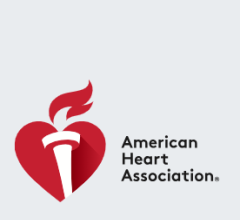
November 14, 2018 — The U.S. Department of Health and Human Services (HHS) released the second edition of the Physical Activity Guidelines for Americans at the American Heart Association’s (AHA) 2018 Scientific Sessions, Nov. 10-12 in Chicago. The second edition — announced at AHA by Adm. Brett P. Giroir, M.D., assistant secretary for health — provides evidence-based recommendations for youth ages three through 17 and adults to safely get the physical activity they need to stay healthy.
There are new key guidelines for children ages three through five, and updated guidelines for:
- Youth ages six through 17;
- Adults;
- Older adults;
- Women during pregnancy and the postpartum period;
- Adults with chronic health conditions; and
- Adults with disabilities.
The United States currently has low levels of adherence to the guidelines — only 26 percent of men, 19 percent of women, and 20 percent of adolescents meet the recommendations. These low levels of physical activity among Americans have health and economic consequences for the nation, with nearly $117 billion dollars in annual healthcare costs and 10 percent of all premature mortality attributable to failure to meet levels of aerobic physical activity recommended in the guidelines. Adults need 150 minutes of moderate-to-vigorous aerobic activity each week, with muscle strengthening activities on two days during the week to stay healthy. Youth ages six through 17 need 60 minutes of moderate-to-vigorous physical activity each day.
“The new guidelines demonstrate that, based on the best science, everyone can dramatically improve their health just by moving – anytime, anywhere, and by any means that gets you active,” said Giroir. “That’s why we need to come together as a nation to get Americans moving. When we move more, we have better cardiovascular health, we are stronger and less susceptible to disease, and we feel better. The updated guidelines include evidence-based strategies that leaders across the nation can use to help Americans fit more physical activity into their daily lives.”
The second edition, based on a comprehensive scientific review, reflects new knowledge about immediate and long-term health benefits from physical activity, as well as new evidence that physical activity can help manage chronic conditions that many Americans already have.
“The American Heart Association has long recognized physical activity as a proven way to lower chances of heart disease and live a longer, healthier life. Our organization is committed to developing programs and advocating for policies that make it easier for everyone to get more physically active, regardless of where they live,” said Ivor Benjamin, M.D., FAHA, American Heart Association president. “In 2008, the American Heart Association adopted the Physical Activity Guidelines and again we are proud to lead the call for health groups across the country to view these guidelines as beneficial to both public health and a worthy tool for clinicians.”
Notable updates to the guidelines include:
- The previous guidelines stated that only 10-minute bouts of physical activity counted toward meeting the guidelines. This requirement has been removed because all activity counts;
- There are immediate health benefits attainable from a single bout of activity, including reduced anxiety and blood pressure, improved quality of sleep and improved insulin sensitivity;
- There are more long-term benefits from physical activity, including improved brain health, reduced risk of eight types of cancer (previously two), reduced risk for fall-related injuries in older adults and reduced risk of excessive weight gain;
- Physical activity helps manage more chronic health conditions:
- It can decrease pain for those with osteoarthritis, reduce disease progression for hypertension and type 2 diabetes, reduce symptoms of anxiety and depression, and improve cognition for those with dementia, multiple sclerosis, ADHD and Parkinson’s disease;
- There are new key guidelines for preschool children to be active throughout the day to enhance growth and development.
For more information: www.health.gov
Reference


 November 14, 2025
November 14, 2025 









